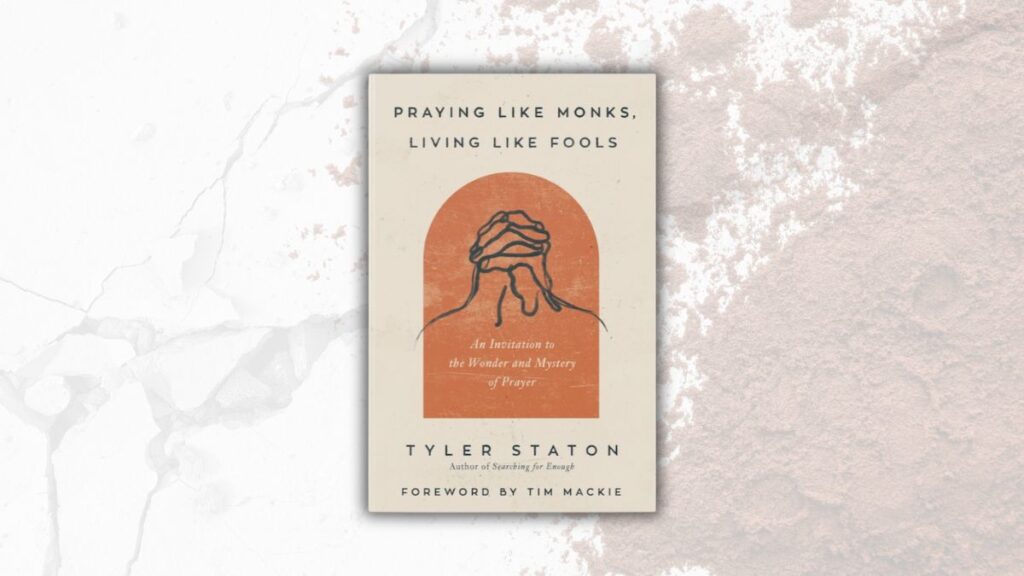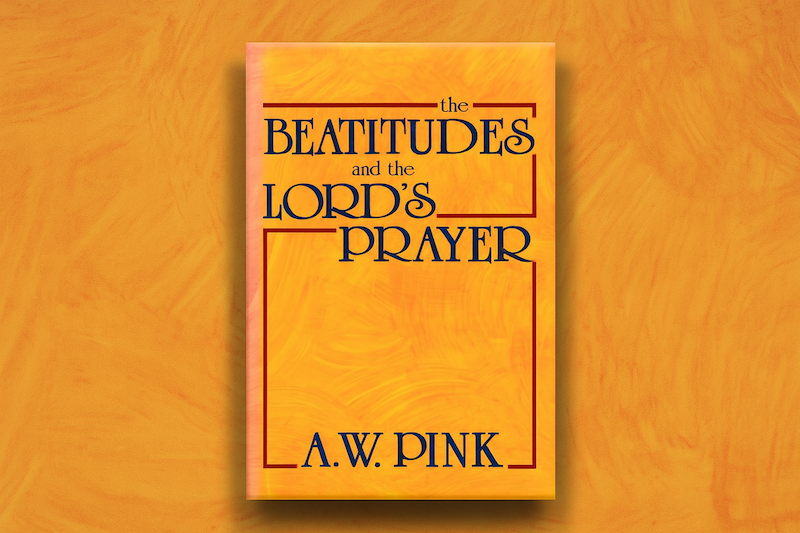
As Tim Mackie of The Bible Project notes in the foreword to Praying Like Monks, Living Like Fools, Tyler Staton “provides a series of meditations on the core practices of prayer that are woven together with deep scriptural wisdom. But this isn’t a book full of ideas about prayer. Every chapter is framed by a story from Tyler’s life where he experienced the thing he’s describing” (xii). Mackie captures exactly what Tyler Staton delivers in Praying Like Monks, Living Like Fools, published by Zondervan in 2022. This is a book from experience, and scripture that calls for us to be disciplined about our prayer lives.
The Why Behind Praying Like Monks, Living Like Fools
Staton reminds the reader that there is great significance in praying well. However, too many pray out of obligation rather than a discipline that fully embraces the significance and weight of praying well. In Praying Like Monks, Living Like Fools, Staton remarks that too many “Bible-believing Christians find little life in prayer. Prayer [for them] is boring, obligatory, or confusing or, most often, all of the above” (3). Throughout this book, readers are invited through story and scripture to embrace the significance and weight of praying well. Through prayer, we “learn to listen to God before speaking, to ask like a child in your old age, to scream your questions in an angry tirade, to undress yourself in vulnerable confession, and to be loved—completely and totally loved, in spite of everything” (3). A book written to “saints, sleepwalkers, and skeptics,” Staton teaches us how to make prayer a theme of our life (5-6).
The Inside of Staton’s Praying Like Monks, Living Like Fools
The book opens with a Foreword by Tim Mackie, followed by an Author’s Note and an Introduction. Loosely following the rhythm of the Lord’s Prayer, Tyler Staton organizes the chapters into a thoughtful progression: Holy Ground explores praying as you can; Be Still and Know reflects on prayer posture; Our Father focuses on adoration; Search Me and Know Me leads into confession; On Earth as It Is in Heaven addresses intercession; Daily Bread turns to petition; The Middle Voice considers prayer as participation; Laboring in Prayer wrestles with praying for the lost; Ask, Seek, Knock engages themes of silence and persistence; and Rebellious Fidelity explores what it means to pray without ceasing. The book concludes with an Epilogue, followed by Acknowledgments, Appendices, and Notes. The book is easy to read and follow. It’s theologically sound, yet it’s not written in a way that feels overly academic or theologically dense.
An Engaging Challenge to Better Prayer Disciplines
Prayer is a discipline that keeps us tethered in a chaotic and unnerving world. Staton reports on a five-year study from Michael Zigarelli of Messiah University, who shows that out of “twenty-thousand Christians in the United States,” they “identified ‘busyness’ as the number one distraction from life with God” (Staton 2022, 38). In prayer, we are learning to “Be still,” and “remember who God is,” and in doing this we remember “who you are. Then do your best to live without getting the order mixed up” (Staton 2022, 49–50). In this act of prayer, we are not only reprioritizing our lives and finding a tether to who God is in a chaotic world, we are also praying because “God promises peace – a supernatural sort of peace we can’t even logically reason out – in place of crippling anxiety,” and it is that prayer that will keep us rooted in who God is (Staton 2022, 13).
Prayer is a discipline that we practice our whole lives, because the pressures remain throughout our whole lives, and because “prayer can’t be mastered. Prayer always means submission. To pray is to willingly put ourselves in the unguarded, exposed position,” a vulnerable surrender with God where we experience humility and God’s hope (Staton 2022, 14). In this way, the act of prayer is also one that is “learned by discovery” (Staton 2022, 25). Good prayer is habitual; it is a ritual, where we are choosing “an ordinary place to become sacred—ordinary holy ground” time and time again (Staton 2022, 50).
In that space, we are learning to be quiet and still, resisting “the urge to decide if this practice of silent prayer is ‘working.’ Don’t evaluate if you’re ‘getting anything out of it’” (Staton 2022, 51). This book calls us to have a daily prayer rhythm—something Jesus himself modeled (Staton 2022, 195). Looking at church history from the Didache to examples in Scripture and story, we get insights from Tyler Staton on how to create an unashamed, bold, and committed prayer rhythm and discipline. To place a higher value on prayer individually and in community—because it is empowering.
“The early Christians placed a higher value on gathering to pray than we commonly do today, and they possessed a higher concentration of the Spirit’s power than we commonly do today. When we pray, expressing our love to God, the power of God, more or less, just inadvertently gets thrown in” (Staton 2022, 197).
Prayer is about a regular practice that puts God back at the center, because whatever is at the center of your life “defines you and forms you into its image” (Staton 2022, 199). Toward the end of this 248-page manual on prayer, Staton captures a beautiful challenge for us: “This isn’t a boisterous call to a more disciplined, legalistic, routine prayer life. It’s a quiet rebellion, a free choice to live our lives by a different order of loves, marching to a different beat in the procession of another King” (Staton 2022, 200).
About Author Tyler Staton
At the time of writing this book, Tyler Staton was the Lead Pastor of Bridgetown Church in Portland, Oregon. He is also the Director of the 24-7 Prayer movement in the Univted States. He has written several other books, including Searching for Enough: The High-Wire Walk Between Doubt and Faith. He, his wife Kristen, and their three sons live in Portland Oregon. He continues to write, blog, and host an engaging podcast.
Why I Read This Book
I read Praying Like Monks, Living Like Fools as part of my ongoing work exploring the Lord’s Prayer—both academically and pastorally, for my Doctor of Ministry program at Kairos University. As someone studying the theological, historical, and practical implications of the Lord’s Prayer, I’m always looking for resources that bridge thoughtful reflection with real-life spiritual practice. Tyler Staton’s book caught my attention because it loosely follows the rhythm of the Lord’s Prayer while offering accessible, theologically grounded insights into prayer. Staton’s emphasis on posture, persistence, and personal transformation resonated deeply with my desire to not just understand the Lord’s Prayer intellectually but to live it out as a transformative discipline and framework for spiritual formation and community life. Again, Staton’s work, though not academic in tone, provides a rich and honest look at what it means to live prayerfully in the modern world—a theme central to my research and ministry.
A Book on Prayer You Must Read
Tyler Staton succeeds in making prayer both accessible and weighty, blending personal story with scriptural depth in a way that draws the reader into a lived theology of prayer. Throughout this book, both his story and his exploration into scripture will give you a more beautiful vision of prayer and why we pray. Staton’s strength lies in his pastoral tone and ability to connect spiritual disciplines to everyday life, to form us as followers of Jesus.
This book is a valuable resource for individuals and communities seeking to cultivate a meaningful prayer life, especially those who may feel stuck, intimidated, or disillusioned by traditional prayer models. I recommend Praying Like Monks, Living Like Fools as a companion for personal devotion, small group discussion, or as a starting point in spiritual formation contexts where the Lord’s Prayer can be practiced as a framework for daily life.



